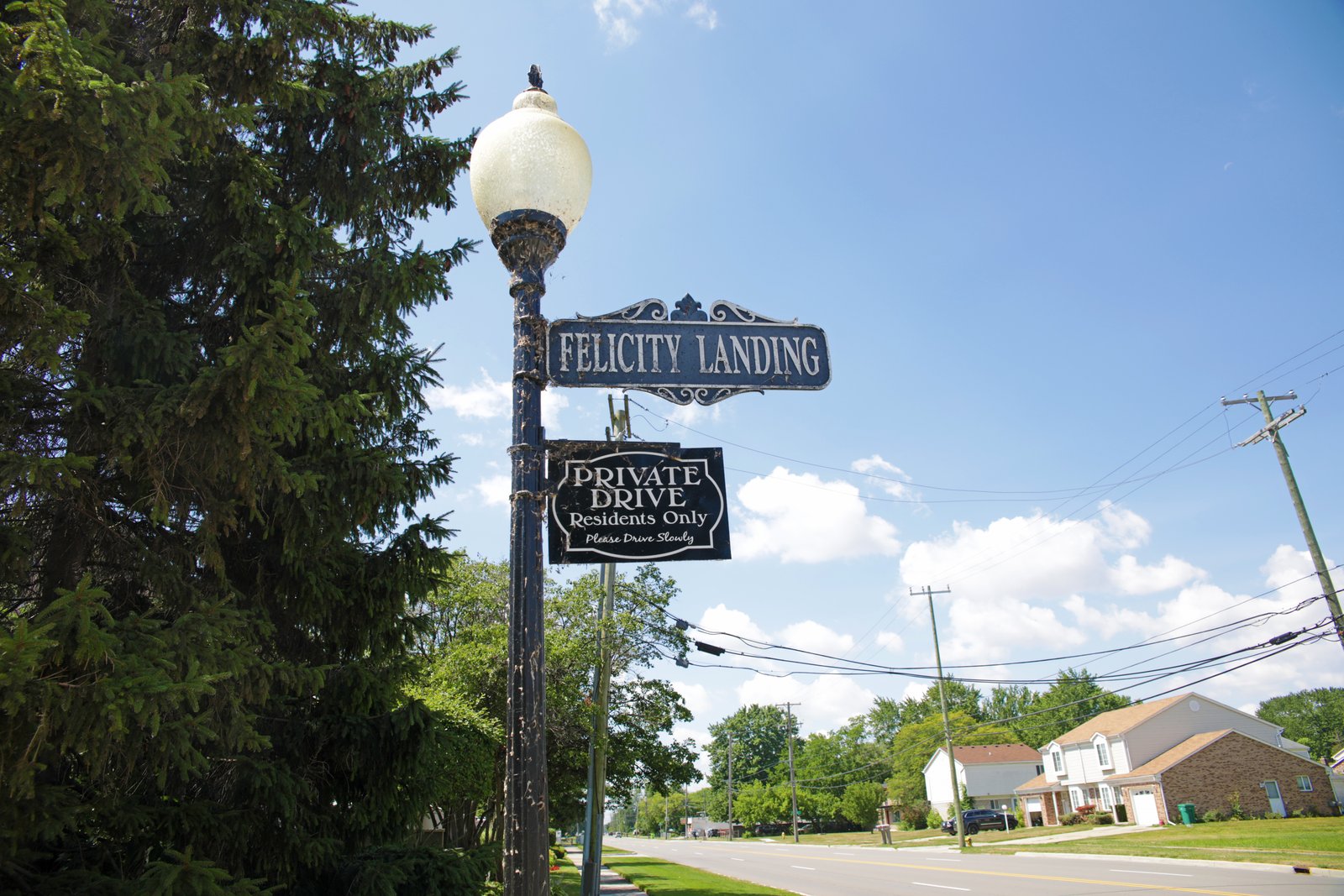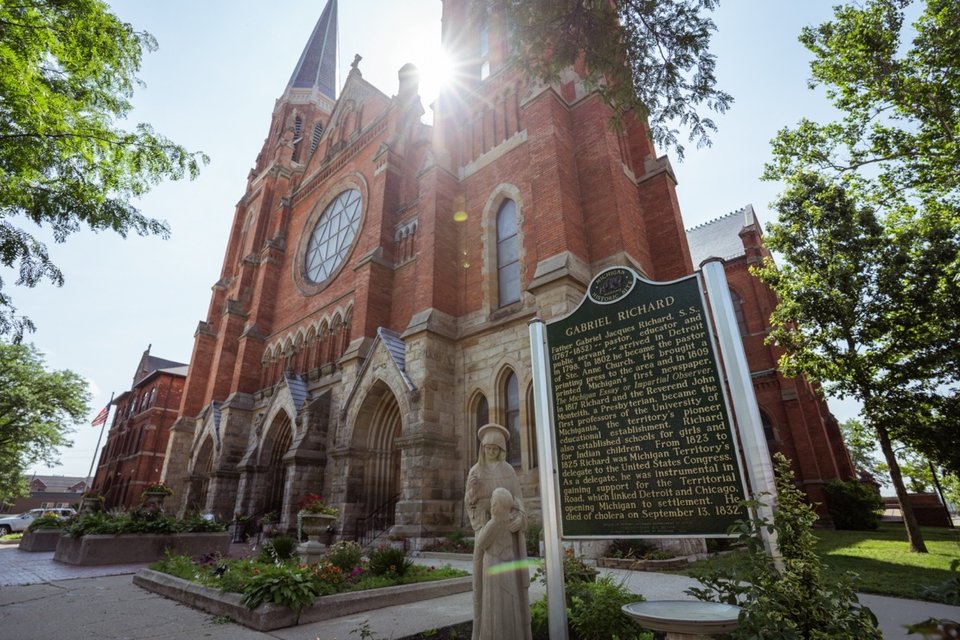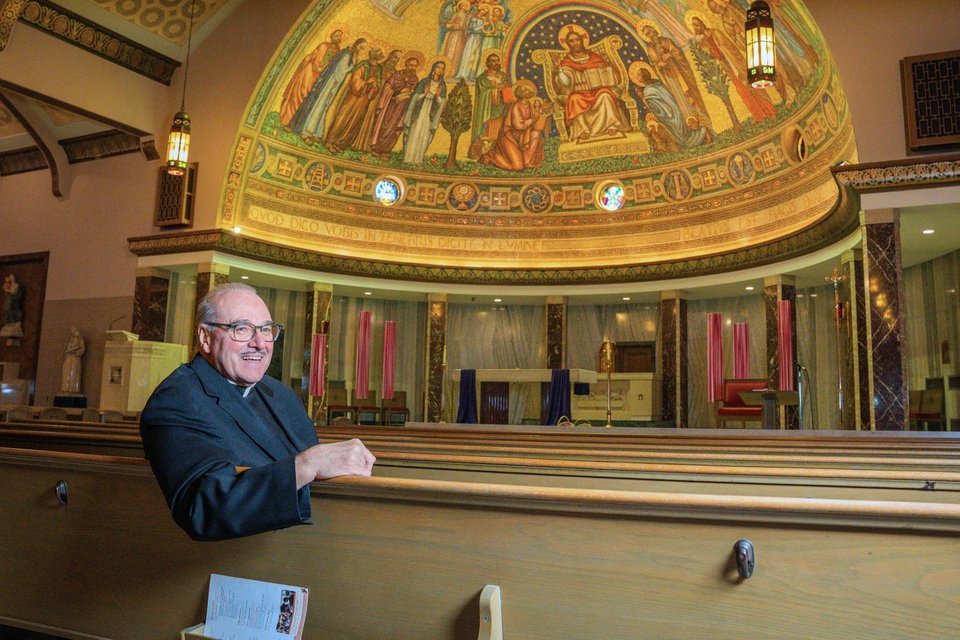In the depths of Lake St. Clair, a submerged 1826 mission church has fascinated mariners for centuries; now, they're trying to find it
ST. CLAIR SHORES — Exactly how much remains of the former St. Felicity Mission has been left up to speculation for the better part of 160 years.
Fr. Philip Dejean built St. Felicity in 1826 on the shores of Lake St. Clair to serve the Catholic faithful at L’Anse Cruise Pointe, an emerging community settled on small spit of land that stuck out from the shoreline.
L’Anse Cruise, now called St. Clair Shores, was accessible to the water, didn’t have a high riverbank — which made transporting wood and supplies from shore easier — it already had paths established for fur-trapping and hunting expeditions, and the local Indigenous community weren’t settled there.
It was a perfect site for settlers — until they realized why the natives wouldn’t build there: rising water levels quickly forced the community to abandon the log-cabin church and build more inland, west of what we now call Jefferson Avenue.
The old mission, now at the bottom of Lake St. Clair, was left to much speculation since it was abandoned in 1855: What did the church look like? What is still left under the water? Was a church ever there at all?
But when a 1995 expedition organized by the Great Lakes Maritime Institute Underwater Research Team and Fr. Michael Ruthenberg, OP, then associate pastor of the former St. Gertrude Parish in St. Clair Shores (now Our Lady of Hope Parish), led to the discovery of five tombstones and a boundary marker of the St. Felicity cemetery, the existence of the mission was confirmed.
Now, a Macomb County official is partnering with Great Lakes researchers to find out more about the mission, including its exact location, and which elements of the church — if any — have been preserved under Lake St. Clair.

“Ted Wahby, the former mayor of St. Clair Shores, was a member of St. Margaret (of Scotland) Parish (in St. Clair Shores) and asked me if I knew anything about the St. Felicity site,” Gerard Santoro, program director of parks and natural resources for the Macomb County Department of Planning and Economic Development, told Detroit Catholic. “I remembered hearing something about it, so I checked it out at the St. Clair Shores Library, and found an interview Ted had with a priest at the time on a cable TV access show. So I learned more about the site based on this priest, Fr. Michael Ruthenberg and the expedition they did in the '90s.”
St. Felicity Mission was established to serve Catholics in the emerging communities of what would later become Macomb County. The area was comprised of “ribbon farms” — narrow claims of land families had along the lakeshore — which formed the basis of settlement along Lake St. Clair.
Researchers are using Macomb County records of family land claims and knowledge about the history of the mission to estimate where St. Felicity might have been located.
“We found a name associated with the mission, a family name,” said Santoro, who declined to reveal the name because the country wants to protect the St. Felicity site from treasure hunters before it can receive state or federal protection. “Thank God, Macomb County has archived its earliest records very well. We were able to find the oldest recorded plots of land in the area; we're not talking about first- or second-generation French ribbon farmers, but third- or fourth-generation French ribbon farmers.”
Finding the St. Felicity 'spit'
Using Macomb County records, the 1995 expedition narrowed down where St. Felicity Mission might be hiding.
Capt. Luke Clyburn of the Noble Odyssey Foundation, which has been researching and exploring the depths of the Great Lakes, was part of the 1995 expedition that found stone markers from the cemetery and other identifying markers. Given the volatile nature of Lake St. Clair, it was difficult for the crew to see in great detail what was located at the bottom of the lake without more advance equipment, he said.
“Because of the depth of water we’re working with, which is very shallow, you have a tremendous amount of weeds and soot. It’s matter of really hand-feeling the entire area,” Capt. Clyburn said. “You’re looking for evidence of stones, markers, anything that would (identify) the area. You have to get a number of people underwater to look for these markers. You can’t find stones, markers with electronic equipment, it has to be basically by feel.”

Finding the name of the family who donated the land where St. Felicity stood is a start, but it might only provide a general guideline for the mission.
What's needed is a physical, geographic reference.
Old maps of the region featured an outlet of land extending from the shore of Lake St. Clair — a “spit” of land, as geographers call it. The “spit” is featured on older maps of the region, but, after 1850, it disappeared. So what happened?
“Going through all the differences in the historic maps, there is this little piece of land that stuck out, halfway between the confluence of the Clinton River and the Grosse Pointes,” Santoro said. “That became the area where we believe St. Felicity was located; it was called L’Anse Cruise Pointe."
Santoro studied the point from historical images and land claims, along with written texts about the lineage of families, along with written histories about the mission.
"We identified on consequent maps how this site changed hands several times, but by 1859 and 1875, maps didn’t show the point," Santoro said. "So what happened here? It existed in 1818; we know the site was functional. But by 1859, it was no longer present. So what happened?”
The Civil Engineers of America — the predecessor of the Army Corps of Engineers — is what happened.
Lake St. Clair was prime real estate for shipping, so U.S. authorities felt it was necessary to dredge the St. Clair River to make it deeper and more accessible for larger shipping vessels to navigate the river north to Lake Huron, and eventually to Lake Michigan and Lake Superior, turning the Great Lakes into a key shipping lane that led to settling and industrialization in the Midwest.
When the St. Felicity Mission was settled in 1826 on the lowlands next to the lake, the natives told the settlers the lake “would consume them.”
Whether the settlers dismissed the warnings as superstition or underestimated its flood potential is up to speculation, Santoro said, but what is certain is that when the Civil Engineers started to dredge the river, it spelled the end of St. Felicity Mission.

“We found that in 1854-55, the channel was opened up by the Civil Engineers of America, like opening a big drain hole from the upper Great Lakes into Lake St. Clair,” Santoro said. “So this rose the level of the whole river, Lake St. Clair and the flats. When we look at the historical data with the maps that show sea grass and swamp areas, we see it was a very shallow lake that wasn’t always conducive for shipping. So it makes sense they wanted the lake to be deeper.”
The average depth of Lake St. Clair is only 11 feet today, but it’s believed the depth increased 3-5 feet after the river's dredging, causing coastal areas to flood and a whole new shoreline to be created. The city of Belvidere, located at the mouth of the Clinton River on Lake St. Clair, became uninhabitable in 1885, and at the same time, the St. Felicity Mission was abandoned.
Fr. Dejean, the founding pastor of St. Felicity, left in 1829 to minister at an Indian Mission in the north, and the Catholics of L’Anse Pointe were under the spiritual care of Fr. Francis Badin, an assistant to Fr. Gabriel Richard.
Fr. Ghislanus J. Boheme, a Belgian native, was assigned to the area north of Detroit in 1834, caring for all Catholics from Grosse Pointe to Port Huron. Fr. Boheme left the then-Diocese of Detroit in 1842, so L’Anse was reverted to mission status, connected to St. Peter Church in Mount Clemens.
With the flooding of 1855, the L’Anse community gave up on the St. Felicity site. Fr. Francis DeBroux, pastor of St. Paul Parish in Grosse Pointe, purchased a couple of acres to the west of what is now Jefferson Avenue from the Vernier Family for the establishment of St. Gertrude Parish — the spiritual successor to St. Felicity Mission.
The moving inland was in response to Lake St. Clair creating a whole new shoreline, a shoreline that is more familiar with readers today, but in some places is 300 to 500 feet more inland than where Fr. Dejean first established St. Felicity.
What might be lying below
Over time, the submerging of St. Felicity has taken on a bit of folklore in the area. What exactly was lost? How big was the mission? What is still down there?
It wasn’t until the 1960s when a happenstance finding gave researchers a solid lead.
“In 1962, a young girl was playing in the water off her family residence at the exact location where we think the church is located, and she stepped on what she thought was a broken Coke bottle," Santoro said. "The family wanted the glass removed, so went down to pick it up and came up with a statue of Our Lady of Sorrows."


The 9-inch, alabaster statue was analyzed for its age, and it was determined it could have belonged to St. Felicity. The statue appeared to be broken off from a larger object — an altar, perhaps.
"We know from research the devotion to Our Lady of Sorrows was especially strong with the French at this mission site, so it would make sense to have a statue of Our Lady of Sorrows at this mission,” Santoro said.
Finally, researchers had a precise point where they could start looking.
The 1995 expedition found gravestones and a marker indicating a possible foundation, but what remains at the site is currently unknown. What could be found with more modern means of sub-marine exploration and extraction? Are there golden chalices and long-lost artifacts waiting to be discovered at the bottom of Lake St. Clair?
Probably not, Santoro said, given the nature of log-cabin missions that dotted the area north of Detroit during the 1850s.
"Based on the architecture and look and feel of the churches that were like it at the time, it would certainly be a wood-frame log cabin church or slat cabin church with home timbers with a pitched roof, shaker shingles,” Santoro said. “We’re not sure if, in that time, the gravestones would be engraved. But we do know, from legal documents from the land owner who allowed for the mission church to be put at the foot of his property, that he and his wife were buried there, along with a priest of the mission.”
The wooden beams of St. Felicity were cut from salvaged wood — mostly used to construct nearby St. Peter Parish in Mount Clemens. But cross beams from the church could very well be preserved by the lakebed.
The Noble Odyssey Foundation is currently seeking a $158,000 grant, including a 50 percent match by the group from the U.S. Department of Commerce through the Coastal Management Program, to explore the site in greater detail.

The foundation should learn by October or November whether the grant will be approved, Capt. Clyburn said.
“We are hoping for sunken markers, anything that would put a physical element into this search,” Capt. Clyburn said. “We can go into documents, county records, church records and it shows up. It’s a matter of finding what makes people interested. We are going to have a documentary film crew with us when we go out — anything we can do to get people interested in the Great Lakes.
“Our goal is to make people aware of the history of the waterway and how people traveled back in the 1700s and 1800s,” Capt. Clyburn continued. “People used the water to get to these points — it was the highway for people during that time.”
Should the foundation's expedition be successful, Santoro said it would be ideal to eventually erect a historical marker at the site, identifying the settlers and natives buried in Lake St. Clair and protecting the site.
History is very much alive today. The cities and towns that occupy Metro Detroit were a direct result of the colonization and settling of Michigan’s lower peninsula two centuries ago.
It's a history that continues with the mission of the Church today — the same mission as when Fr. Dejean asked his benefactors in France in 1826 for $100 to build the St. Felicity Mission at the small L’Anse Creuse outpost in what was then New France.
Capt. Clyburn, Santoro and other Macomb County officials and history aficionados hope the National Oceanic Atmospheric Administration approves a more complete expedition to better tell the story of this piece of Michigan history — a time when settlers braved choppy waters to carve out a place to build the future of the Church in Michigan.
“We think this should be recognized as part of our cultural identity,” Santoro said. “Macomb County is well documented with the Moravians from southern Prussia who founded some of the inland part of the county, but we don’t have a lot of documentation about the French, who were the first settlers from Europe. We don’t have a strong history of that. Like Detroit has streets named after the French ribbon famers in early French-American culture, we also have families, settlers who made these first towns. It deserved to be researched and documented as part of our history.”
Copy Permalink
History












